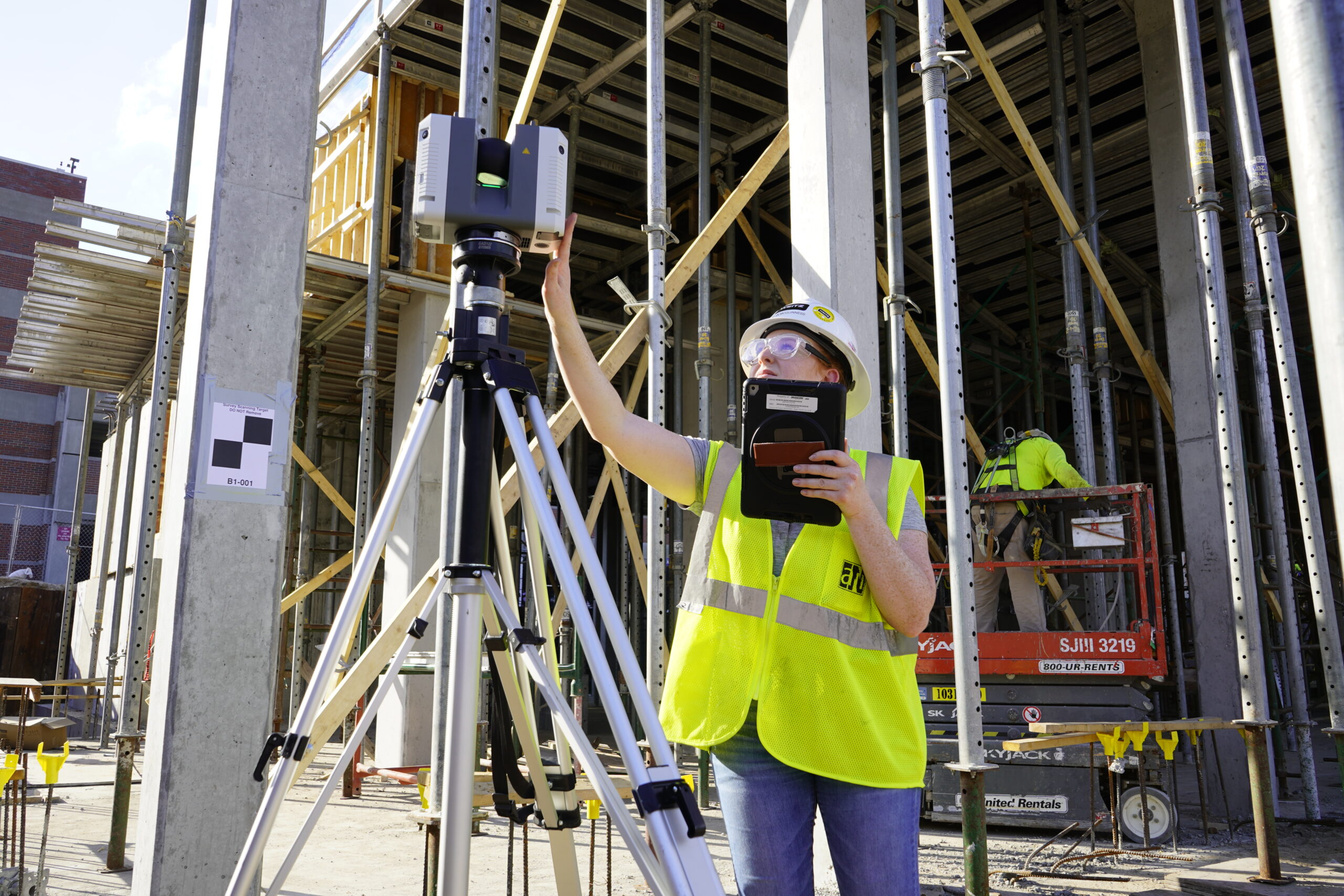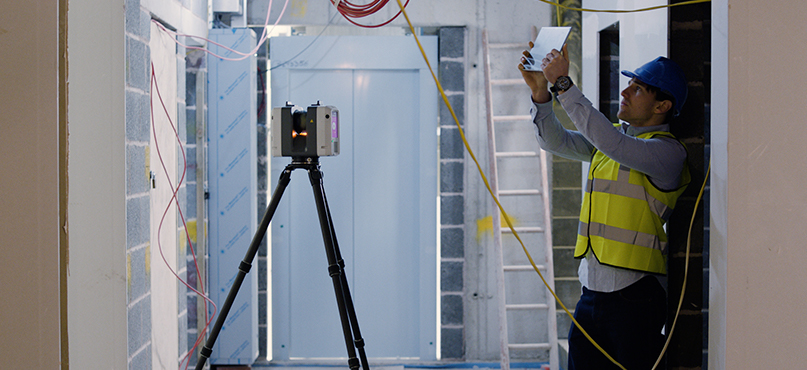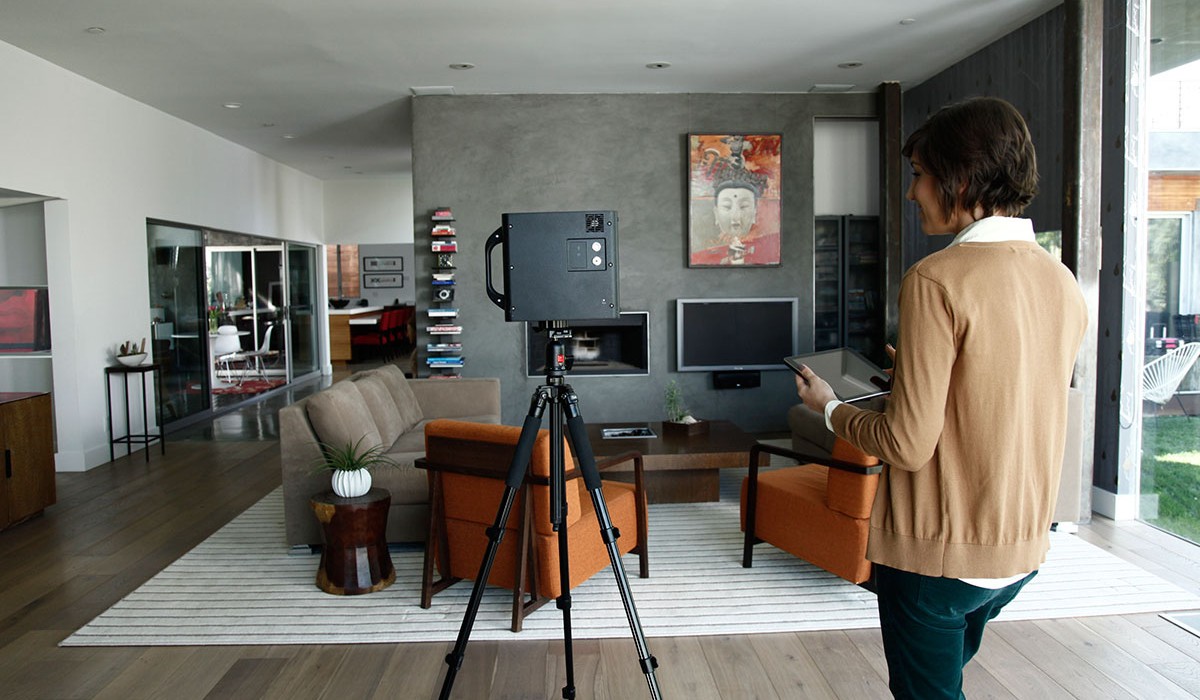The Top 5 Benefits of Using 3D Scanning for Remodeling and Renovation Projects

3D scanning is redefining what’s possible in remodeling and renovation. Once considered a futuristic tool reserved for high-tech industries, it has quickly become one of the most valuable technologies for architects, contractors, and homeowners who want accuracy, efficiency, and confidence in their projects.
Traditional methods—manual measurements, sketches, and even laser tapes—often fall short in capturing the true conditions of a space. Minor measurement errors can cascade into design issues, unexpected costs, and project delays. 3D scanning eliminates those risks by creating a precise, high-resolution digital replica of any building or site, enabling professionals to see and plan every detail before construction even begins.
As remodeling projects grow more complex, 3D scanning brings order to the chaos. It simplifies planning, enhances collaboration, and gives every stakeholder—from designers to builders—a shared visual foundation to work from. Whether it’s a kitchen renovation or a historic building restoration, the technology ensures that what’s designed on-screen perfectly matches what’s built in the real world.
Now, let’s start by understanding what 3D scanning actually is and how it works.

What Is 3D Scanning and How It Works
At its core, 3D scanning is a method of capturing the exact shape, size, and spatial relationships of objects or environments to create a digital 3D representation. In remodeling and renovation, that means turning a physical space—walls, floors, beams, windows, even imperfections—into a detailed virtual model that can be viewed, measured, and analyzed from any angle.
The process begins with a 3D scanner, a device that emits laser light or structured light to record millions of data points across surfaces. These data points form a “point cloud,” a dense digital map of the space. From this point cloud, specialized software reconstructs the environment into a precise 3D model that mirrors real-world conditions down to millimeters.
There are several types of scanners used depending on project size and complexity:
- Terrestrial LiDAR scanners are mounted on tripods and used for large areas such as building interiors or exteriors.
- Handheld or mobile scanners capture tight or complex spaces, ideal for residential remodels.
- Drone-based photogrammetry uses overlapping images to map rooftops, landscapes, or hard-to-reach areas.
Once the scan is complete, the 3D data can be imported into CAD (Computer-Aided Design) or BIM (Building Information Modeling) platforms. This integration allows architects, engineers, and contractors to overlay new design concepts directly onto the as-built model—instantly identifying conflicts or constraints before any physical work begins.
The result? A highly accurate, digital “as-built” record that becomes the foundation of better design decisions, improved communication, and fewer on-site surprises. Instead of relying on outdated drawings or manual sketches, 3D scanning gives every stakeholder a single source of truth about the existing structure.
Now that we’ve established what 3D scanning is and how it functions, let’s dive into the first major benefit: accuracy—and how it’s changing the way remodeling projects are executed.
Benefit #1 — Unmatched Measurement Accuracy
One of the most significant advantages of 3D scanning in remodeling and renovation is its unparalleled accuracy. Traditional measurement methods—manual tape, laser distance meters, or relying on old blueprints—often leave room for human error or missing information. Even a small miscalculation of half an inch can create major issues during construction, especially in tight spaces or when installing custom elements like cabinetry, windows, or HVAC systems.

3D scanning removes these risks by capturing millions of measurement points across every surface, edge, and curve of a structure. The result is a digital model that reflects exact real-world conditions with precision down to millimeters. Every wall that’s slightly out of square, every ceiling slope, and every irregular beam is recorded exactly as it exists.
This level of precision means architects and designers no longer have to rely on assumptions when planning renovations. They can base their drawings and models on verified “as-built” conditions—reducing guesswork and minimizing costly revisions later. Contractors also gain confidence knowing their measurements are exact, ensuring materials fit perfectly the first time.
For example, consider a commercial renovation project in a historic building. Traditional plans may not reflect decades of subtle structural shifts or undocumented repairs. A 3D scan captures the true current state of the structure, allowing engineers to design reinforcements or retrofits based on real data rather than outdated documents.
Ultimately, the accuracy of 3D scanning translates to fewer change orders, less rework, and smoother coordination across every phase of the project. When everyone—from designers to builders—is working from the same precise digital model, errors are drastically reduced, timelines stay on track, and clients gain greater trust in the process.
With measurement precision secured, let’s explore how 3D scanning doesn’t just make projects more accurate—but also dramatically faster and more efficient from start to finish.
Benefit #2 — Improved Project Efficiency and Speed
In remodeling and renovation, time is money. Every day a project runs over schedule increases labor costs, material expenses, and client frustration. 3D scanning significantly reduces those risks by transforming how quickly and efficiently teams can gather, share, and act on project information.
Traditionally, gathering accurate site data required multiple visits, manual measurements, and time-consuming documentation. It could take days—or even weeks—to survey a large building. With 3D scanning, that same process can be completed in a fraction of the time. A professional scanning team can capture the full interior and exterior of a 10,000-square-foot property in a single day, generating millions of precise data points instantly.
Once the scan is complete, the digital model can be uploaded and shared with all project stakeholders. Architects, engineers, and contractors no longer need to wait for manual measurements or hand-drawn sketches. Everyone has immediate access to the same real-world 3D data, enabling faster design iterations, quicker approvals, and more informed decision-making from the start.
This efficiency also extends to remote collaboration. Since 3D scans can be viewed and manipulated online, team members can analyze site details, take measurements, and plan changes without physically being on location. For projects involving multiple trades or specialists across different cities, this eliminates the logistical delays that often slow progress.
Consider a multi-unit apartment renovation: rather than sending multiple crews to measure each unit, a single scan captures them all. The data is then shared digitally, so the design team can begin drafting plans immediately, while contractors prepare material estimates in parallel. What used to take weeks of back-and-forth site visits can now be done in a few days.
The result is a dramatic improvement in project flow—fewer bottlenecks, fewer scheduling conflicts, and faster movement from concept to construction. 3D scanning effectively replaces tedious manual steps with a streamlined digital workflow that keeps projects moving efficiently and predictably.
With speed and accuracy working hand in hand, the next major benefit comes into focus: enhanced collaboration and visualization—a key reason why 3D scanning is becoming the gold standard for renovation teams worldwide.
Benefit #3 — Enhanced Collaboration and Visualization
Collaboration is often the biggest challenge in remodeling and renovation projects. Architects, designers, contractors, and clients each bring their own perspectives, drawings, and expectations to the table. Miscommunication between these parties can lead to design errors, construction delays, and budget overruns. 3D scanning eliminates much of that friction by creating a shared visual language—a precise, interactive model of the existing space that everyone can understand and reference.
Unlike traditional 2D blueprints, a 3D scan provides a true-to-life view of the environment. Stakeholders can explore the model from any angle, take accurate measurements, and visualize how proposed changes will look and fit in real space. This immersive level of detail helps bridge the gap between design intent and practical execution.
For designers and architects, 3D scans make it easier to overlay new design concepts onto real conditions. They can see how new walls, windows, or structural elements interact with existing features before construction begins—reducing the risk of unforeseen conflicts on-site. Contractors, on the other hand, gain access to the same accurate reference model, ensuring their work aligns seamlessly with the designer’s vision.
Clients also benefit tremendously from this level of visualization. Instead of trying to interpret technical drawings, they can experience their renovation virtually, walking through a digital version of the finished space before any physical work begins. This improves communication, builds confidence, and helps secure faster approvals—since everyone can clearly see and agree on the plan.
In addition, integration with BIM (Building Information Modeling) and AR/VR technologies allows for even more interactive collaboration. Teams can conduct virtual walkthroughs, identify potential clashes, and update design elements in real time. The result is a more transparent and efficient process that reduces miscommunication, accelerates decision-making, and aligns every participant around a single, unified vision.
In short, 3D scanning replaces guesswork with clarity. Every conversation becomes more informed, every revision more accurate, and every decision more collaborative.
Benefit #4 — Reduced Costs and Waste
One of the most tangible and immediate advantages of using 3D scanning in remodeling and renovation is the reduction of costs and material waste. While the upfront cost of scanning may seem like an added step, it quickly pays for itself through efficiency, accuracy, and smarter decision-making throughout the project lifecycle.
Every construction professional knows how costly small errors can become. An inaccurate measurement, a missing beam in a drawing, or an overlooked wall slope can lead to expensive rework, material waste, and delays. 3D scanning eliminates these problems by ensuring that design and construction are based on precise, verified as-built data from the start. This accuracy means fewer surprises during demolition or installation—reducing the need for costly on-site adjustments.
Beyond preventing errors, 3D scanning also helps optimize material usage. With an exact digital model, contractors can calculate how much material is needed with far greater precision. This minimizes overordering, reduces waste, and supports sustainable building practices—an increasingly important consideration in modern construction.
For example, in a commercial office remodel, having a complete 3D scan allows designers to plan ductwork, electrical systems, and wall framing with exact fitment. That level of precision avoids redundant materials and ensures every component is fabricated correctly the first time. Over the course of multiple projects, these savings can easily reach tens of thousands of dollars.
There’s also a long-term cost advantage: digital scans can be reused for future renovations or maintenance. Once the data is captured, it becomes a permanent resource for the building’s lifecycle. Need to add a new wing, upgrade plumbing, or install solar panels? The original 3D scan eliminates the need for costly resurveying—saving both time and money down the road.
In essence, 3D scanning turns renovation planning into a data-driven process. Fewer errors, less waste, and smarter decisions mean more projects are delivered on budget and on schedule—a win for both contractors and clients.
Benefit #5 — Streamlined Renovation Planning and Documentation
In any remodeling or renovation project, documentation is everything. Accurate records of existing conditions not only guide the initial design but also influence construction decisions, permit approvals, and future maintenance. 3D scanning simplifies this entire process by delivering a complete, high-resolution digital record of the space—something traditional drawings or photos could never achieve.
When a site is 3D scanned, every surface, corner, and structural element is captured in exact detail and stored digitally. This creates a permanent as-built model that can be referenced at any stage of the project. Whether it’s six weeks or six years later, stakeholders can return to the model to extract dimensions, verify details, or plan new upgrades without having to revisit the site.
This level of documentation is particularly valuable during the planning and permitting phase. Municipalities and regulatory bodies increasingly request accurate as-built data to ensure code compliance. Instead of relying on outdated paper blueprints or manual sketches, 3D scans provide verifiable proof of conditions—streamlining approvals and reducing the risk of compliance issues.
For large commercial buildings or complex historical renovations, having this digital record is essential. Older structures often have undocumented modifications, uneven geometry, or hidden irregularities that can complicate future work. A 3D scan captures these nuances precisely, creating a baseline digital twin of the building that future architects, engineers, and owners can depend on.
Even after a project’s completion, this data continues to deliver value. Facility managers can use the 3D model to track utilities, plan maintenance, or visualize future renovations without disruptive exploratory work. The result is a smoother, safer, and more organized building lifecycle—from design to demolition.
In short, 3D scanning doesn’t just enhance the renovation process—it transforms the way building data is captured, stored, and used for years to come.
With all five benefits explored, let’s look ahead to where this technology is going—and why adopting it today can future-proof your approach to remodeling and renovation.
The Future of 3D Scanning in Remodeling
As technology continues to reshape the construction industry, 3D scanning stands at the forefront of a digital transformation that’s only just beginning. What started as a specialized tool for large-scale engineering and architecture projects is rapidly becoming standard practice in residential and commercial remodeling alike. The future promises even greater accessibility, automation, and integration—making 3D scanning an indispensable part of every renovation professional’s toolkit.

One of the biggest trends shaping the future is the rise of AI-powered modeling. Artificial intelligence can now process raw point cloud data faster and more accurately than ever before, automatically identifying walls, doors, and structural elements to create detailed 3D models in minutes. This automation drastically reduces post-processing time and enables smaller firms to achieve results that once required entire design teams.
At the same time, mobile and drone-based scanning technologies are expanding access to high-quality data capture. Modern smartphones and compact LiDAR-equipped devices can scan smaller spaces with impressive precision, while drones make it easy to document rooftops, facades, and exterior landscapes. These advances allow even modest remodeling firms or individual contractors to incorporate 3D scanning into their workflows without large equipment investments.
Integration with cloud-based platforms and collaborative tools is another major leap forward. Teams can now upload scans to shared online environments, where architects, engineers, and clients can explore, annotate, and edit models in real time. Combined with augmented and virtual reality, these digital twins make it possible to visualize renovations with an unprecedented level of realism—before a single nail is driven.
Looking further ahead, 3D scanning will continue to merge with other emerging construction technologies, such as generative design, robotic fabrication, and digital twins for facility management. This convergence will enable fully data-driven renovation ecosystems where every decision—from design to maintenance—is informed by precise, dynamic digital information.
In essence, the future of 3D scanning isn’t just about capturing spaces—it’s about connecting every stage of the building lifecycle through accurate, intelligent, and accessible data. Remodeling professionals who adopt this technology now position themselves to lead in an increasingly competitive and tech-driven industry.
Conclusion
3D scanning is more than just a technological upgrade—it’s a complete rethinking of how remodeling and renovation projects are planned, visualized, and executed. By bringing millimeter-level precision and full spatial awareness into the early stages of design, it eliminates many of the uncertainties that have long plagued construction teams and property owners alike.
Let’s quickly recap the five major benefits:
- Unmatched accuracy — eliminating costly measurement errors and providing a reliable foundation for design.
- Improved efficiency — capturing complex site data in hours, not days, and enabling remote collaboration.
- Enhanced collaboration and visualization — aligning architects, contractors, and clients through clear, shared 3D models.
- Reduced costs and waste — minimizing rework, optimizing material use, and improving sustainability.
- Streamlined planning and documentation — creating permanent, high-value digital records for future maintenance and upgrades.
Together, these advantages make 3D scanning one of the smartest investments a renovation team can make. It doesn’t just improve today’s projects—it lays the groundwork for smoother, more efficient workflows in the future.
If you’re ready to experience the benefits firsthand, partnering with a professional data capture service is the ideal next step. These specialists handle the scanning, data processing, and model delivery, ensuring you receive clean, accurate as-built documentation ready for CAD, BIM, or design software. Whether you’re a contractor, architect, or property owner, a reliable data capture service transforms your site into a precise digital model—saving time, reducing risk, and setting your project up for success.
As you plan your next remodel, consider how integrating 3D scanning and expert data capture services can simplify your workflow, improve communication, and help you build with confidence in a digital-first future.
Prefer to Speak Directly?
Experience precision in every project.

